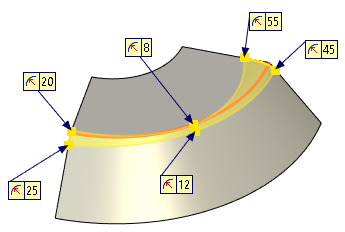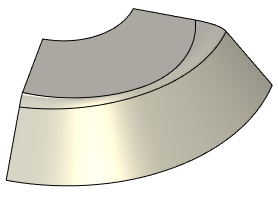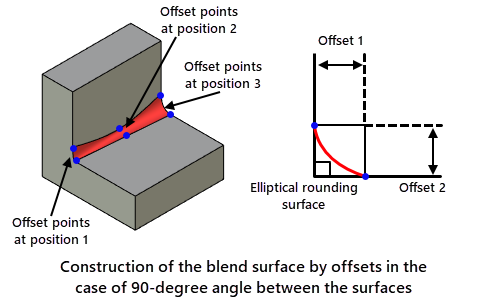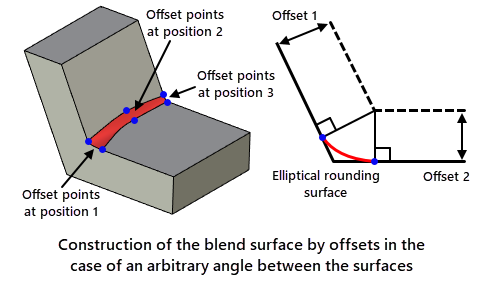Rounding with Variable Convexity (Elliptic, Parabolic, Hyperbolic) |
  
|
The mode of creating roundings (fillets) with variable convexity can be called in the Edge Blend command using the ![]() Variable (Ellipse) button located in the upper part of the parameters window.
Variable (Ellipse) button located in the upper part of the parameters window.
This type of rounding allows creation of advanced blend surfaces. Size and shape of the blend surface is defined by the offsets from the first and the second faces (as conventionally denoted), and by the convexity coefficient (Rho) value.


Depending on the convexity coefficient (Rho) value all resulting surfaces are divided in three groups:
•0 < K < 0.5
Blend surface cross section have elliptical shape.
•K = 0.5
•Blend surface cross section have parabolic shape.
•0.5 < K < 1
•Blend surface cross section have hyperbolic shape.
|
||
0 < K < 0.5 |
K = 0.5 |
0.5 < K < 1 |
The shape of the surface can be defined at any point on the edge or on the chain of edges. The list is managed in the same way as in the case of the circular variable-radius rounding. The change in the rounding radius between points can be also Linear or Smooth as in the circular variable-radius rounding.
The offsets from the faces define the boundaries of the blend surface. The algorithm for constructing a blending surface with a variable elliptical radius is illustrated in the following figures:


1. An offset surface is constructed at the distance Offset 1 from the second face.
2. Another offset surface is constructed at the distance Offset 2 from the first face.
3. The intersection line between the two offsets is projected on the original faces in normal direction, thus defining the boundaries of the blend surface.
In the special case of blending two flat orthogonal faces, this means the distance from the blended edge to the side boundary of the blend surface is equal to the value of the offset.
See Also: